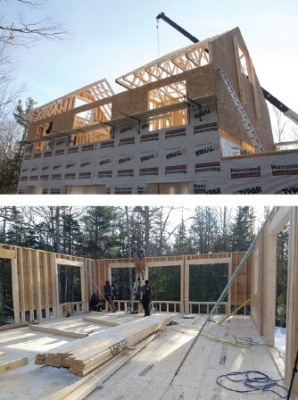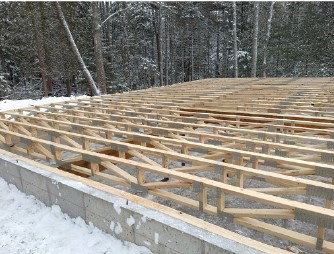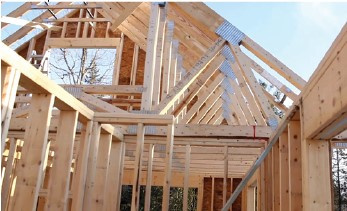Convince Me, Convince My Customers!
Convince Me, Convince My Customers!
You want to grow your business, right? While it used to be somewhat easy to follow time-tested steps to achieve steady, manageable growth, the current mayhem in the marketplace has added another layer of complexity that will require you to take a different approach to overcome.
If the past nine months have taught us anything, it’s that those who are nimble and can pivot are the ones who can navigate these choppy, COVID-19 waters. In order for your business to survive, you need to think farther outside the box.

The Challenges Builders Face
Full disclosure, I am writing this from the perspective of a custom home builder of more than twenty years. I want to offer you my perspective about how I looked at my jobs, my customers, the product I created, and most of all, my reputation as one of the top builders in my city.
It’s important to start with the pressures every builder customer of yours might be under. When he or she is sitting in their office or at the dining room table with the future homeowners who will be walking on your floor trusses, protected from the weather behind those plumb and square wall panels you create, and staying dry under the precision roof trusses made in your factory, often the first question asked by those homeowners after the contract was just signed is, “When do you think you’ll be finished with our home?”
The builder blurts out a date and the countdown begins. Fortunately, as the builder, I knew how much time I could shave off the schedule. It can be weeks, not days. I know this because I know how long it can take to stick frame a custom home on site and I know how much time can be saved by framing it all with components.
But let me ask you this: Do you think all the builders in your market know this? What do you think the homeowners in your market would say if they knew how fast their home could be under roof with all the other subs busy as beavers installing HVAC, pipes, and cables? Of course they’d be over the moon! I say this because it’s easy to underestimate the ability of a normal homeowner to be an effective product specifier in the custom home market.

The Skilled Labor Vacuum
I never realized when I started my syndicated “Ask the Builder” newspaper column and website years ago that I’d get as many homeowner complaints as I do. The skilled labor conundrum is by no means new, and sadly, it’s only getting worse. One reason, in my opinion, is that you and thousands of others have not been going to your local school board meetings to complain loudly. We absolutely need to bring back vocational training to all levels of education, even primary grades. You need to help lead that charge!
Your builder customer is constantly trying to find skilled labor just as you are likely doing in your factories. The builder dislikes having to retrain each new helper. It sucks both time and profit. Fortunately, your precision components efficiently solve this problem. All that’s required is a lead carpenter on the job who’s familiar with the best practices for installing your products.
You may have to go the extra mile in certain instances. For example, certain components might have to be labeled “Up” or “Down” to make them idiot proof. In my daughter’s new home, for example, the builder installed three floor trusses upside down that paralleled a staircase. This created an enormous problem a few weeks later when the plumber tried to run a few drain lines. If you put a truss tag on the underside of a truss that clearly indicates which side is up, anyone looking at the framing could see the error.

The Big Bottom Line
Your builder customer has many of the same ancillary labor costs as you do. He also assumes lots more liability if he decides to stick frame the house instead of laying off that task to you. Each time a carpenter or helper pulls the trigger of a circular saw, it’s like watching the carnival wheel spin. Will he or will he not be going to the hospital?
Most of your factory workers get to assemble components in relatively mild conditions. Conversely, the builder is out in the snow and the blistering sun, maybe even fighting insects and fatigue at the same time. You take a lot of the struggle off his plate by allowing him to minimize the cutting and material handling on the jobsite.
Builders know that worker’s compensation claims, medical expenses, work slowdowns due to mud, snow, heat, dust, etc. all take large chunks out of their bottom lines. Putting your components together just becomes a full-sized Lego exercise that takes much of those things off their plates. My advice is to create a short presentation that shows prospective builder customers why it’s so very smart to allow you to provide all the components for his jobs.
SBCA Can Help!
With the help of CMs across the country, SBCA created the CM Toolbox (sbcindustry.com/toolbox). This large library contains digital resources, including videos, presentations, photos, and talking points, that can be used to communicate the value of component framing versus other framing methods.
The Way to Close Deals
You know all the advantages your components offer to builders and homeowners, but are you effectively communicating this to those builders you want to add to your customer list?
The benefits of your components are endless in my opinion. I get to offer you a unique perspective because I’ve also been a master plumber since age 29. My experience over the years prompted me to insist my daughter use floor trusses, wall panels, and special attic trusses for her new home. Here’s why:
All you have to do is drill one 3 and 9/16ths hole through a traditional floor joist to realize why floor trusses are a plumber’s dream. Structural issues limit the size and location of bored holes in dimensional lumber. Those problems disappear when a plumber steps onto the jobsite and sees all the wide-open webs in floor trusses. If he knows this when bidding the job, his bid absolutely should be lower because he saves scads of time installing his pipe. These savings are multiplied when the builder’s HVAC subcontractor and electrician come to realize in the bid process that they’ll have to drill far fewer holes, too.
All of these cost savings can help lower the builder’s quote to the homeowner compared to a competitor who intends to use traditional dimensional lumber or even I-joists.
Imagine the builder sharing with his homeowners that interior bearing walls will be at a minimum or non-existent. For those homeowners who are embracing the green building movement, they’ll be happy as clams to discover that your components will produce virtually no waste on the job and can facilitate insulation more effectively.
Lastly, your design software matched with your component connector plates have the ability to make just about any design come to life. You can do things that, for the most part, can’t be done easily using traditional dimensional lumber. The new homeowners are going to love flat floors that don’t bounce. The tile layer will be in heaven, too! The list is endless of all the things your components offer to both your builder and his customer, the homeowner.
The Way to Make It So
Here’s how I see it. You’ve got a spectacular product that not enough people know about. Your components take away so much pain, not only for builders, but also for the homeowner. You need to start to think about how you’re going to get the word out.
I’ll end with a story that never gets old. Back when I was just starting out in the building business quite a few homeowners would ask me if I was going to use “Brand A” windows in their job. Initially I’d answer, “No. I’m going to use Brand B.” More often than not, I’d not get the job.
One night a lightbulb went off when I saw a TV ad from my local Brand A distributor extolling why it was so great. Hah! No wonder my customers are asking me about that brand!
From then on I’d ask in the initial site visit if they wanted to use Brand A windows. Suffice it to say I closed about eight out of ten of those jobs. Think how you can use marketing and advertising techniques in your marketplace to reach your target audiences. Partner up with your supply chain and figure out a way to try to turn homeowners into your specifiers. You’ll never know until you try it.


